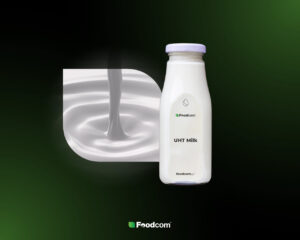Lee nuestro informe sobre el mercado lácteo en India. Echa un vistazo a las proyecciones para varios productos lácteos en 2021 y compáralas con la temporada anterior. Descubre quiénes son los principales compradores de productos lácteos de la India y las iniciativas para expandir el mercado de exportación. También lee sobre el futuro del sector lácteo en India y los desafíos que se avecinan.
Producción
En 2021, se proyecta que la producción de leche de vaca en India alcance los 96 millones de toneladas, en comparación con la producción de 93.8 millones de toneladas del año anterior. Se estima que el país ocupará el tercer lugar como productor de leche de vaca más grande, con una participación del 17.7% en la producción global en 2021. La cantidad de vacas lecheras en India se proyecta en 58 millones, un aumento del 2.7% respecto al año anterior y equivalente al 41.8% del total mundial. Los datos muestran que el rendimiento de leche de vaca en India es mucho más bajo que en otros países. La producción de otros tipos de leche en India se estima en 101 millones de toneladas, un aumento del 2% en comparación con el año anterior y con una participación del 91.6% en el mercado global.
En 2021, se espera que la producción de mantequilla aumente un 3.3% respecto al año anterior, alcanzando las 6.30 millones de toneladas. La mantequilla india se consume casi en su totalidad en el mercado interno. En 2021, se espera que la producción de leche desnatada en polvo (SMP) en India crezca un 3% en comparación con el año anterior, alcanzando alrededor de 680,000 toneladas y representando el 13.5% de la producción mundial.
Comercio internacional
Los principales compradores de productos lácteos de la India incluyen a los Emiratos Árabes Unidos, Bangladesh, Estados Unidos, Bután, Singapur y Arabia Saudita. En los últimos años, India ha estado promoviendo activamente el desarrollo de su sector de exportación láctea a través de diversas iniciativas gubernamentales. Durante la pandemia, uno de los principales problemas para los productores lácteos fue el aumento vertiginoso de los costos de envío, que se triplicaron en un año. Recientemente, se anunció un esquema de asistencia revisado que ayudará a los productores lácteos a enviar sus productos. Los fabricantes recibirán apoyo financiero para cubrir los costos de flete; el gobierno cubrirá el 50% de estos costos si los productos lácteos se exportan desde India por mar. Se espera que este esquema esté vigente hasta marzo de 2022 y mejore significativamente el sector lácteo indio. Además, India y Estados Unidos están de acuerdo en la necesidad de establecer una clara arquitectura comercial entre ellos y probablemente buscarán acuerdos adecuados en el futuro cercano. Estados Unidos ha expresado un interés creciente en productos agrícolas de India, incluidos los productos lácteos.
Exportación
En la primera mitad de 2021, India redujo sus entregas de mantequilla a Estados Unidos en más del 36% en comparación con el mismo período del año anterior. Sin embargo, el país aún ocupaba el segundo lugar como proveedor más grande de mantequilla a Estados Unidos, con 4,538 toneladas del producto. Al mismo tiempo, los envíos de yogur indio a Estados Unidos aumentaron en más del 21%, alcanzando un total de 135 toneladas, mientras que las entregas de leche desnatada en polvo (WMP) disminuyeron en más del 96% a 7 toneladas. El gobierno indio también está buscando acuerdos comerciales con Australia, Canadá y el Reino Unido. A pesar de una disminución de casi el 44% en las entregas de mantequilla a Australia, India sigue siendo el principal proveedor del producto para el país.
Importación
En términos de importaciones, India ha importado productos lácteos por un valor de $12.40 millones en 2021, frente a $11.34 millones en el año anterior. Sin embargo, las cifras son mucho más bajas en comparación con las importaciones de productos lácteos en años anteriores. India está principalmente interesada en comprar productos lácteos para cubrir la demanda de forraje animal. El país ha comprado un total de 6,043 toneladas de suero de leche en polvo a proveedores europeos en la primera mitad de 2021. Los principales proveedores incluyen Francia, Alemania y Polonia. Al mismo tiempo, India fue el principal comprador de lactosa farmacéutica de Nueva Zelanda, con 3



![Przegląd rynku kakao w 2025 [Global Report] Przegląd rynku kakao w 2025 [Global Report]](https://foodcom.pl/wp-content/uploads/2024/08/rynek-kakao-dynamika-rynku-analiza-300x150.png)




